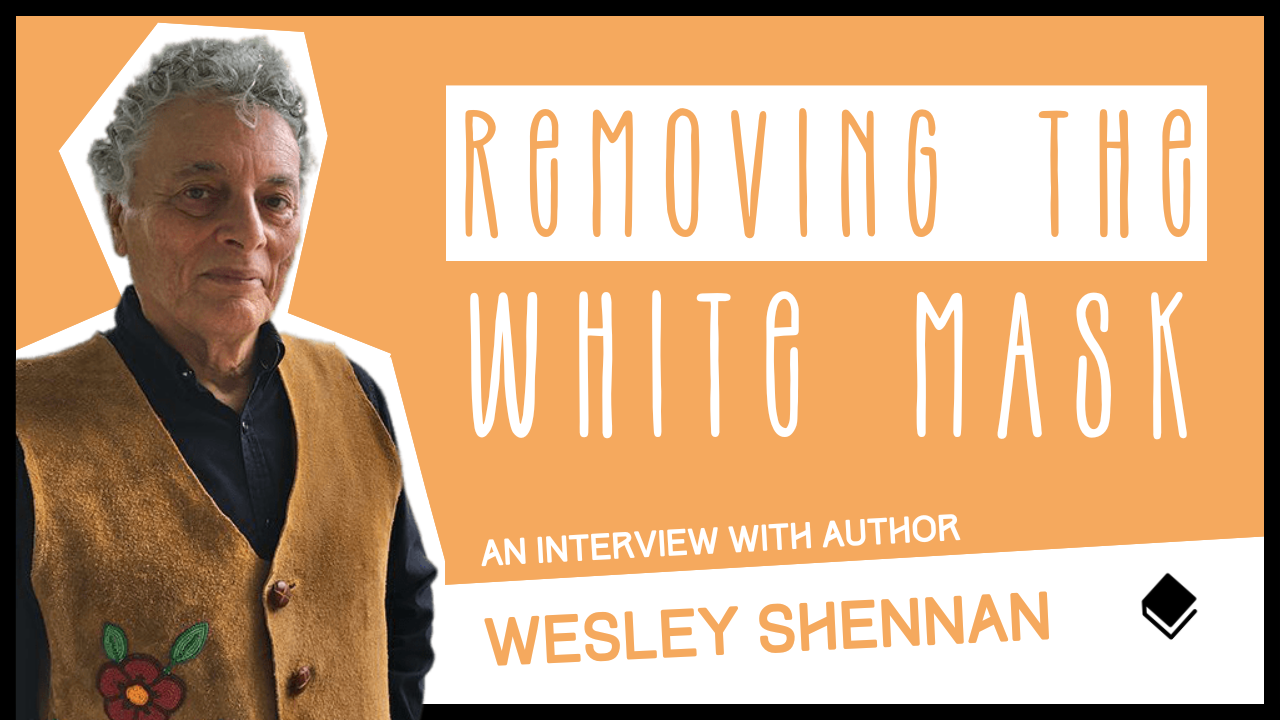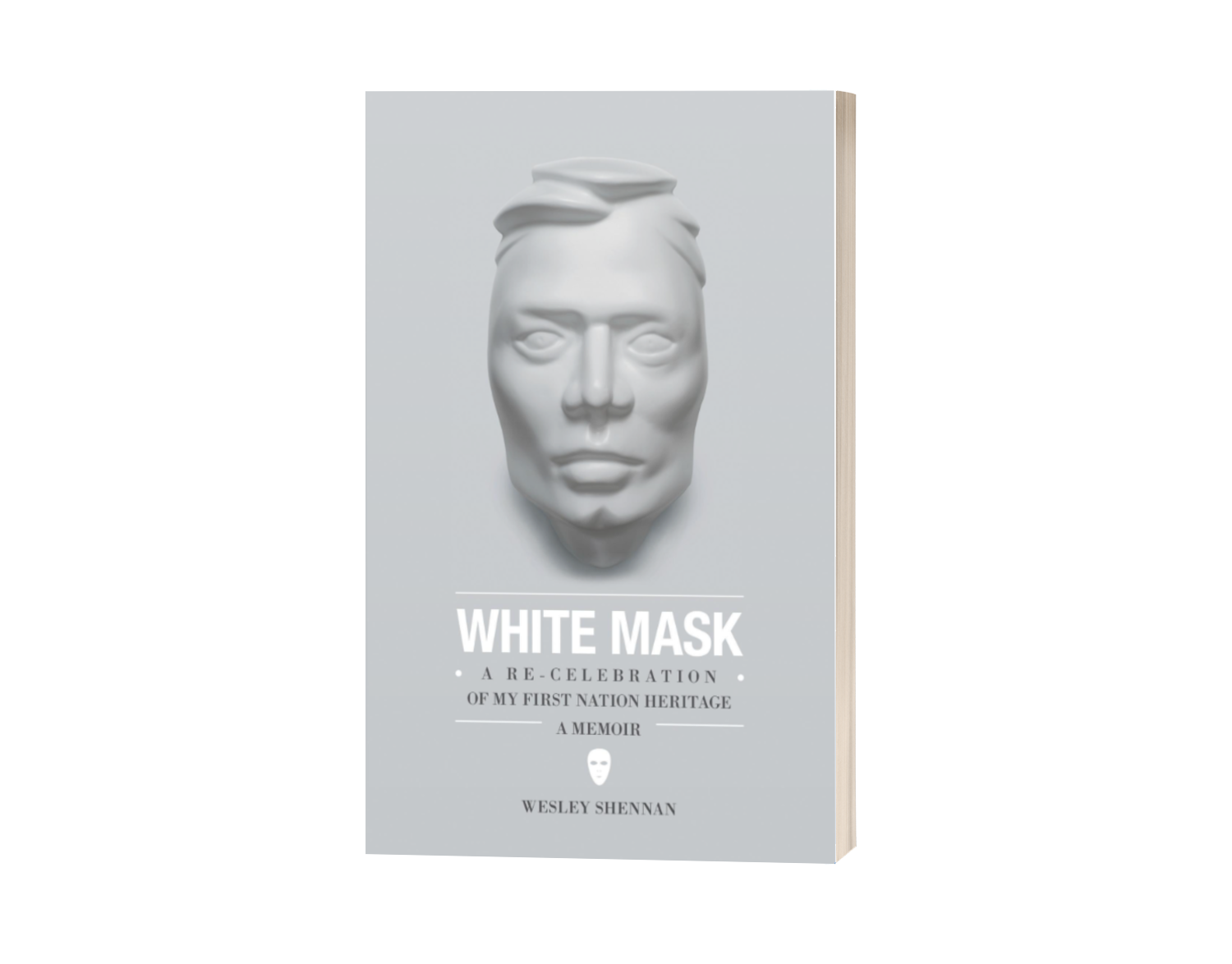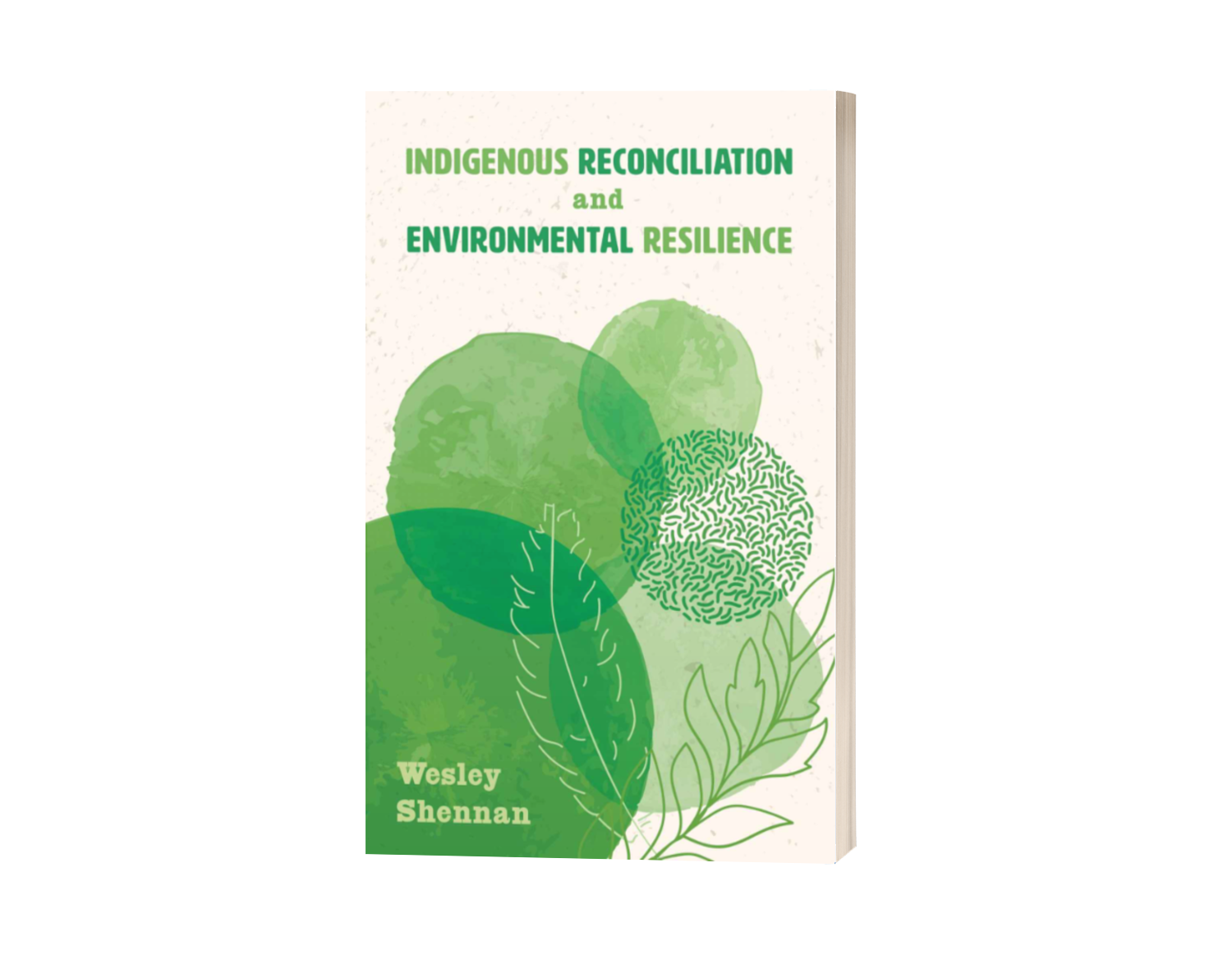Removing the 'White Mask': An Interview with Author Wesley Shennan
/Content warning: This blog post discusses the Canadian residential school system. If it's the right time for you, we invite you to read and engage with this story.
National Day for Truth and Reconciliation in Canada is a time for all Canadians to reflect upon the devastating impacts of the residential school system that continue to be felt in First Nations, Metis, and Inuit communities.
FriesenPress author Wesley Shennan is someone who has thought deeply about the effects of residential schools on himself and members of his family. That introspection has manifested itself in two books: White Mask: A Re-Celebration of My First Nation Heritage (2014) and Indigenous Reconciliation and Environmental Resilience (2022).
Published with FriesenPress eight years apart, Wesley’s writing explores Indigenous issues through his lens as a member of the Michel First Nation and as a community planner working predominantly with First Nations in British Columbia for the past 22 years. Tracing his journey from a place of shame to one of celebration and self-acceptance, the two books combine into a detailed legacy from which future generations can learn.
In advance of National Day for Truth and Reconciliation, we spoke with Wesley to learn more about what drives him to publish his books, how writing aided him on his healing journey, and his advice for aspiring writers:
Take us back to the beginning — what inspired you to write and publish your first book, the memoir White Mask?
I was walking along the seashore of English Bay in Vancouver in 2008, when a voice came to me. He said, “Write your memoir.” I had never, ever thought of writing a memoir before I heard that voice.
At first, I ignored it. But the voice kept coming back and, after a year or so, I started writing. I always enjoyed writing, but my writing was always for publications and technical journals — very technical and planning oriented. I took some creative writing courses to try to break free of that cold and distant type of writing.
Can you describe the process of writing White Mask? After you heard the call to write, how did it come together?
After I started, I very quickly asked myself, “Well, who am I writing this book for?” And actually my target audience is relatives who are not yet born. I wanted to leave a legacy for them describing what life was like in my era. I would have loved to have a book written by my relative who took the birch bark canoe across Canada in the 1790s — from my research, a journey that took 3 or 4 years — but I don’t have that book. My goal was to leave a book for future relatives so they could see what life was like when I was alive. That’s how I got going on it.
But then, after I took these creative writing courses, I met Daniel Wood — a fantastic fellow. He’s since passed away, but Daniel was a great mentor. He put a creative snap into my writing and really helped me with that book a lot.
More than 5 years after I started writing, the book was eventually published in 2014. Actually, the FriesenPress editorial team suggested White Mask as a title — an excellent suggestion.
You mention a driving force behind White Mask being to leave a legacy for relatives to learn from. What’s been the feedback from those in your circle about White Mask or about your second book, Indigenous Reconciliation Environmental Resilience?
For White Mask, I remember my aunt saying, “Oh, you really exposed yourself there and laid your soul on the line. Do you feel any better about that?” And I said, “Yeah, actually I do.” Because there’s a journey of hiding who I was for many years.
My grandparents attended the Dunbow Industrial School in High River, Alberta. The teachings that they passed on to my mom and to me was this: "Be ashamed of being an Indian. You'll never amount to anything in society, you're inferior, and you'll never get rid of that brown skin." My mom, who didn't have very Indigenous features to most settlers (but very obvious to the Metis), always hid her roots and passed this teaching on to me. I also have features that are more Italian or Greek and it was easy for me to wear the ‘white mask’ and blend into settler society.
That’s where the White Mask title comes from. It wasn't until my 30s that I started questioning my teaching and why I felt this way. And it's a path I'm on, not a destination. I still have feelings of inferiority at times when I really shouldn't.
Did the act of writing play a role in your healing journey?
It did play a role. Writing the book was me fully embracing that I was First Nation and going forth with a feeling of pride in who I am instead of trying to hide it. My mom and my grandma were very ashamed of who they were and really tried to hide it all the time. And for my grandma, especially, it was really difficult.
Once I got into the writing, I did some research on discrimination and where it comes from. Gandhi’s autobiography, The Story of My Experiments with Truth, was really helpful for that. From Gandhi’s book I ended up talking to Rina Kashyap, a scholar writing about Gandhi from the Delhi University in India. She took what Gandhi wrote and explored the concepts of racism and discrimination, where it comes from, how it’s used, and specifically how it’s used to make people feel ashamed of who they are. Then those in power justify themselves by putting it into the realm of ideas. Once self-shaming is in the realm of ideas, it’s pretty hard to challenge. It really helped me to write that book and do that research to support how I was feeling.
How did you connect with Rina?
While researching online, her name came up as a person who was using Gandhi’s teachings as part of her PhD thesis at Delhi University. I contacted her and asked if I could use some of her work in my book. She said, “Oh, by all means, go ahead, as long as you acknowledge where you got it from.” So, I did, and her work actually appears in the second book as well.
This July, you published your second book with FriesenPress, Indigenous Reconciliation and Environmental Resilience. Your new book deals with some similar themes as White Mask — has time affected your perspective on some of these themes and issues that you’d been writing about, eight years later?
That’s a really interesting question actually. When I wrote White Mask, I think I concentrated mainly on blatant discrimination against individual people and the effects of that. For the second book, I started thinking more about systemic discrimination. I thought, “Well, gee, I wonder if I’ve ever experienced systemic discrimination so I can explain it a little better?” And then I realized the whole reason I left [my role in] the federal government was due the systemic discrimination that I’ve felt. My career path as a manager with a federal government was really blocked by that discrimination, so I left after two years.
The Indigenous reconciliation element of the second book really dives into cultural themes that I would not have thought about when I wrote the first one. I touched on the differences between Indigenous cultures a little bit in book one, but I really delved into the details in the second book — how those cultures are different and how reconciliation really starts with understanding Indigenous culture. That begins with stepping outside of your own background and experiences with an open mind, to really have a good look at what makes Indigenous cultures different. “Where do those differences come from?” To say that they’re wrong because they’re different is not right.
In addition to being a writer, your day job is as a community planner. Is environmentalism and environmental stewardship a passion of yours?
That's exactly what it is — a passion. I’m a rural community planner. I’ve always been involved with identifying critical wildlife habitat, sensitive vegetation zones, and water habitats. My heart is really in the country, and I’ve always done this planning with an environmental focus. It was a natural progression for me to write about and draw upon those experiences for my second book.
What are you most proud of with regards to being a twice-published author?
It comes down to one word: legacy.
That’s what it is for me. I hope that future generations have an opportunity to read both of the books and are able to make some practical application in their lives. Those future relatives who aren’t yet born, that’s really who White Mask is for.
The second book is more contemporary — a friend of mine who’s a community planner read it and said, “I really like your Indigenous section, because it opened my eyes to a lot of things I hadn’t thought about. I’m more informed now.” That was rewarding to hear.
What advice would you give to other aspiring authors who might be reading this, if they are thinking about writing their book?
The first thing is to get a good mentor — especially for the first book. I had never written a book of creative nonfiction writing, and I didn’t really know how to express verbs or write dialogue correctly. Daniel Wood really helped me get White Mask off the ground.
He never charged me a cent for any of the work he did. He’d say, “Wes, send me another chapter.” So I’d send him a chapter and he’d make comments and say, “Wes, send me another chapter.” We just kept going until the book was done. His prompting, input, and advice was so essential to me. It’s too bad he’s no longer around. Find and connect with a good mentor like Daniel.
I can also say that you shouldn’t be afraid to discard chapters. I’ve got a whole file full of chapters that were left out of White Mask. They’re not bad, but they didn’t really add anything to the book so we just cut them. Including them might have made the book longer, but it wouldn’t have made the book any better.
Finally, another thing I would highlight for authors is that I’m having excerpts of my book currently published in Boomer magazine, which is in Richmond, Virginia. Since that started, I’ve noticed that there are a number of book sales coming in from the United States. I’m also writing a few short stories for Boomer magazine that aren’t related to the book at all, but the readership seems to like those as well. The lesson here is to reach out. See if a magazine would want to publish an excerpt of your published book. There are only upsides from there.
Is there one takeaway or lesson that you hope readers will take away from your books?
The takeaway from White Mask would be: accept who you are. Don’t let anyone or any teaching make you ashamed. Everyone’s different, and everyone’s unique in the world. Celebrate who you are — that’s the message for White Mask.
For Indigenous Reconciliation and Environmental Resilience: please learn something new about Indigenous people and respect who we are. There are so many people who I think look at Indigenous people from their own cultural lens without attempting to learn something new.
But the environmental section is even more important to me. We’ve only got 50 years left if we keep on at this rate of economic growth. Please do your part to extend the life of this planet.
###
Wesley Shennan’s books are available now on the FriesenPress Bookstore.












